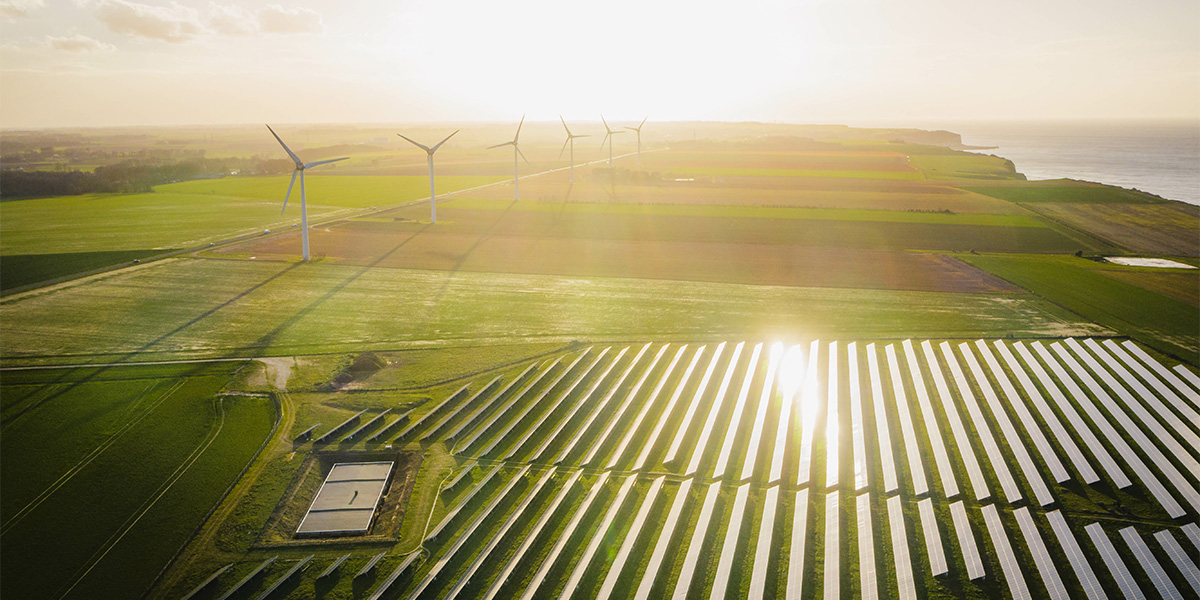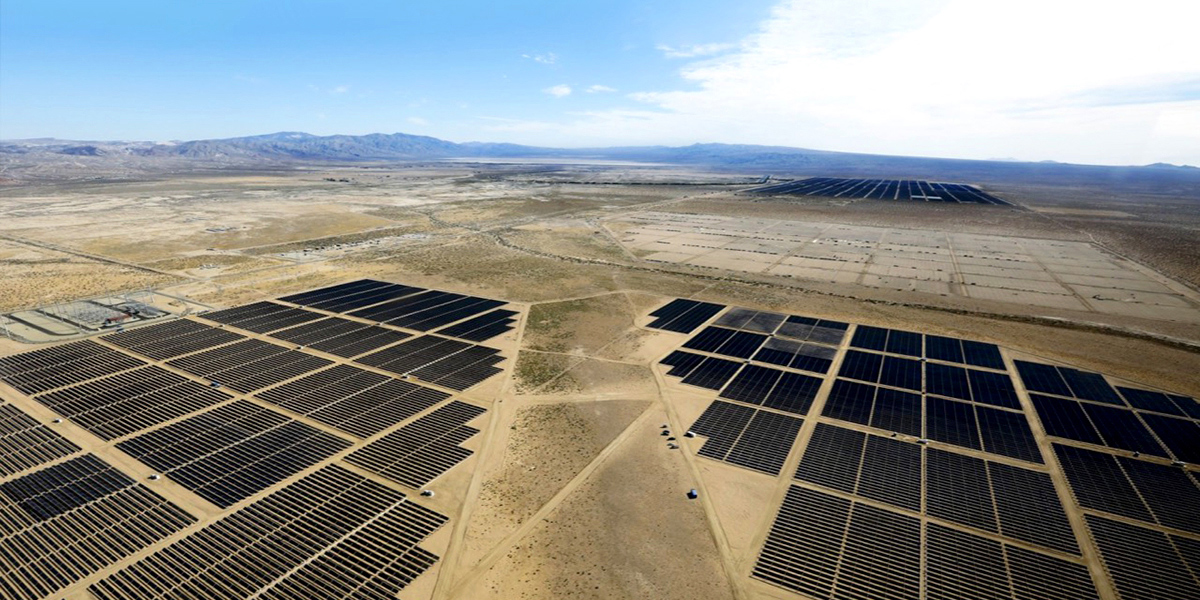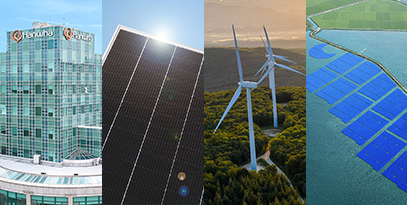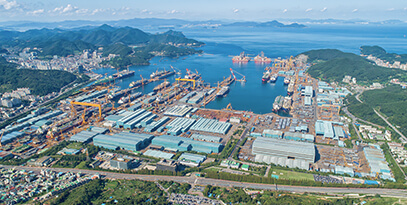Fueling change:
Insights into the multidimensional energy transition


 The next frontier in
The next frontier in
sustainable supply chains Growth models for
Growth models for
renewables How hydrogen is reshaping
How hydrogen is reshaping
the energy landscape
This series sheds light on the key discussions held at CERAWeek 2024, exploring new pathways for a multidimensional energy transition. Through insights from trailblazers at Hanwha Qcells, Hanwha Ocean, Hanwha Power Systems, and PSM, discover how Hanwha is laying the groundwork by delivering transformative decarbonization solutions in a dynamic energy landscape.
The energy transition isn't just about increasing renewables — it’s also about balancing priorities like climate goals, energy security, and affordability. In today's increasingly complex world, a simple linear transition isn't viable. While the need to reduce emissions is clear, the best approach remains uncertain. The world needs an inclusive, resilient, and equitable transition plan that accounts for global variations in policies and challenges.
CERAWeek, taking place this year from March 18 to March 22, brings together global energy leaders to address these issues from an industry perspective. Against the backdrop of the agreement at COP28 to transition away from fossil fuels, CERAWeek 2024 explores potential pathways to scale up renewables while safeguarding energy access and security.
This four-part series highlights key topics from CERAWeek 2024, examines the future of the multidimensional, multispeed, multifuel transition, and spotlights the pivotal role of private sector actors like Hanwha in powering this transition.

Embracing complexity in the energy transition
Globally, energy systems are experiencing a fast and significant change. Energy demand is increasing every year, driven by forces such as technological innovation, changes in consumption patterns, supply dynamics, and policy shifts. Coal, oil, and natural gas still account for 82% of global energy demand despite the largest increase in renewable capacities to date. Yet, we must triple worldwide renewable energy capacity by 2030 to achieve net zero targets.
This presents an extremely daunting challenge: how can the world provide energy access to the more than 760 million people who lack it and meet the demand for an additional two billion people by 2050, all while delivering that energy at an affordable cost and reducing carbon emissions? Addressing this complex challenge requires collaborative efforts from various stakeholders — businesses, governments, and society — working together to drive meaningful improvements in the energy sector.
Currently, many existing frameworks for the energy transition are often too narrowly focused on only one part of the energy trilemma, such as sustainability, security, or affordability factors. What’s more, these factors look very different in Africa, Latin America, and developing countries in Asia compared to Europe and the U.S., where per capita incomes are as much as 40 times higher.
Therefore, to pave the way for a sustainable energy future, we must adopt a truly global, comprehensive approach. Leveraging a multidimensional model that accounts for each country’s varying infrastructure and environmental factors, as well as an optimal energy mix, helps ensure resilience on the path to net zero.

The pivotal role of the private sector
When it comes to a multidimensional transition, a strong public sector will empower a strong private sector — but the scale of the energy transformation is simply too large for the public sector to tackle alone.
Climate risk has become a major concern for financial institutions and markets, especially considering that climate policy is relatively new — the first international climate treaty only came into force in 1994. Weak governance, poorly targeted subsidies, and inadequate capacity and planning pose threats to the energy transition. Additionally, with global public debt exceeding 80% of global GDP, the responsibility increasingly falls on the private sector to invest in global energy access and resilience.
As a result, private companies have a unique opportunity to fill in market gaps and spearhead the energy transition — and the most effective solution starts from within. The Carbon Trust emphasizes that up to 90% of an organization’s environmental impact lies in the value chain. Thus, a multidimensional approach should challenge companies to rethink how they supply, transport, and distribute energy in a way that balances all elements of the energy trilemma.
By establishing a multidimensional mindset from end-to-end, private sectors can ensure that energy value chains are streamlined and explore practical solutions to scale up the use of renewables. This strategy boosts operational efficiency and adds tangible value — a vital component of a resilient energy transition. However, rather than overhauling an entire system overnight, pursuing step by step change will fundamentally transform the decarbonization of industries for the long term.
One practical application of this framework is in the maritime industry. Global emissions from all shipping vessels account for about 3% of total GHG emissions each year, but the industry is complicated to decarbonize due to the broad spectrum of vessel types and sizes, the large amounts of energy they use, and the inherently global nature of maritime transport. While the progress in making industries sustainable has so far been linear, the progress in addressing climate change must be exponential. This begins with investing in solutions that harness the benefits of decarbonization, diversification, and innovation.

Hanwha Qcells’ Beacon Solar Energy Project (CA, USA)
Many paths, one clean energy future
As energy evolves, so does our world. Likewise, the path to net zero must also adapt to emerging economies, resources, and technologies — and now is the time for private sectors to embrace their role.
As a transformative solutions driver, Hanwha offers a stable and comprehensive energy portfolio that strives to meet diverse needs. With a mix of energy sources, including solar, wind, hydrogen, LNG, and more, the company is balancing long-term climate goals while protecting against short-term energy vulnerabilities. Energy must also be transported sustainably, which is why Hanwha is taking a comprehensive approach that includes green shipping and other ocean-friendly solutions to promote low-carbon supply chains. Furthermore, by investing in materials like perovskites to revolutionize traditional silicon solar cells and developing technology like hydrogen gas turbines to decarbonize hard-to-abate sectors, Hanwha is integrating its services across the entire energy value chain, enhancing resilience and revolutionizing industries from the inside out.
For more on CERAWeek 2024, check out the other articles in this series to explore key themes of the conference, including energy markets, power markets in transition, new supply chains for net zero, technology and innovation, and climate and sustainability.
Coming Soon!








